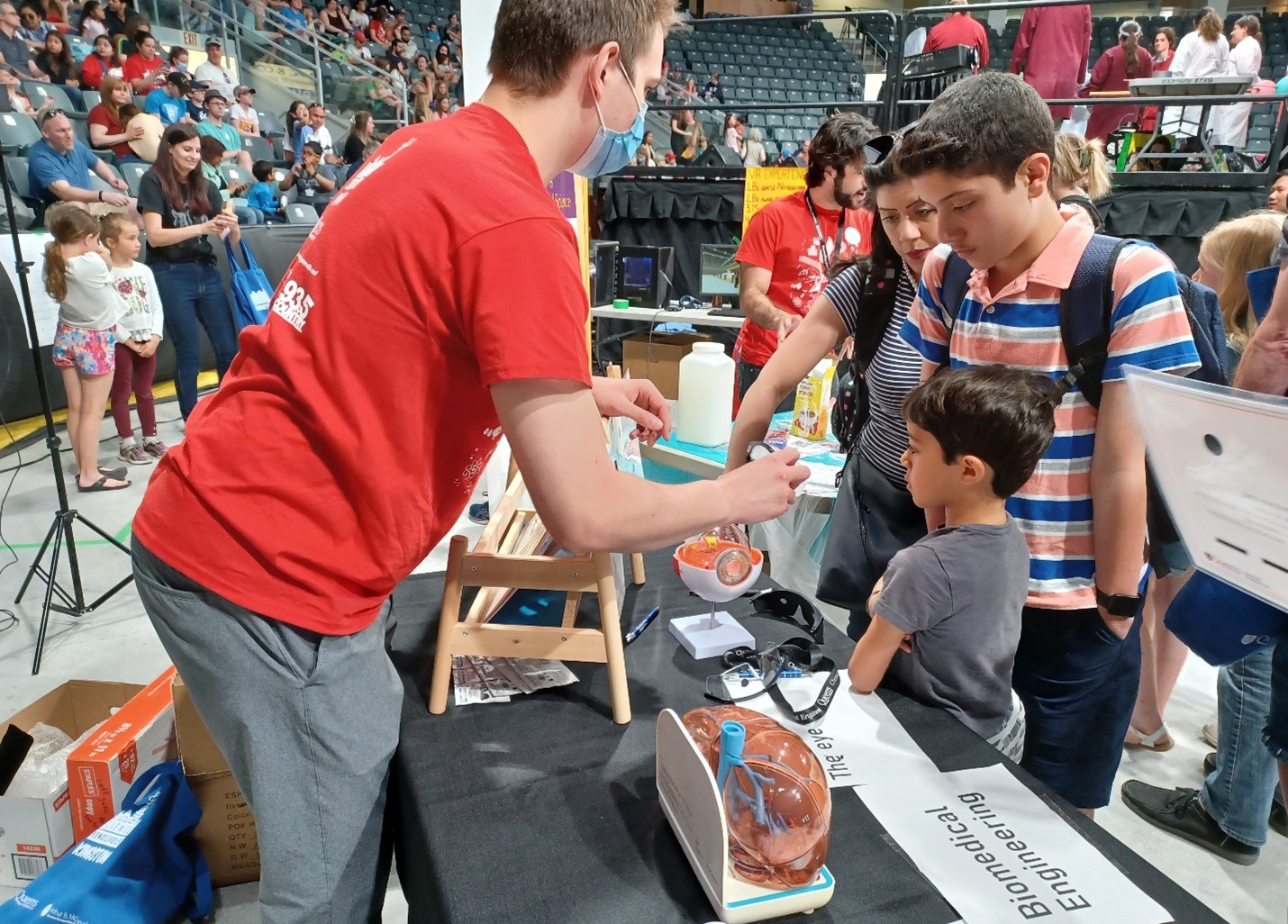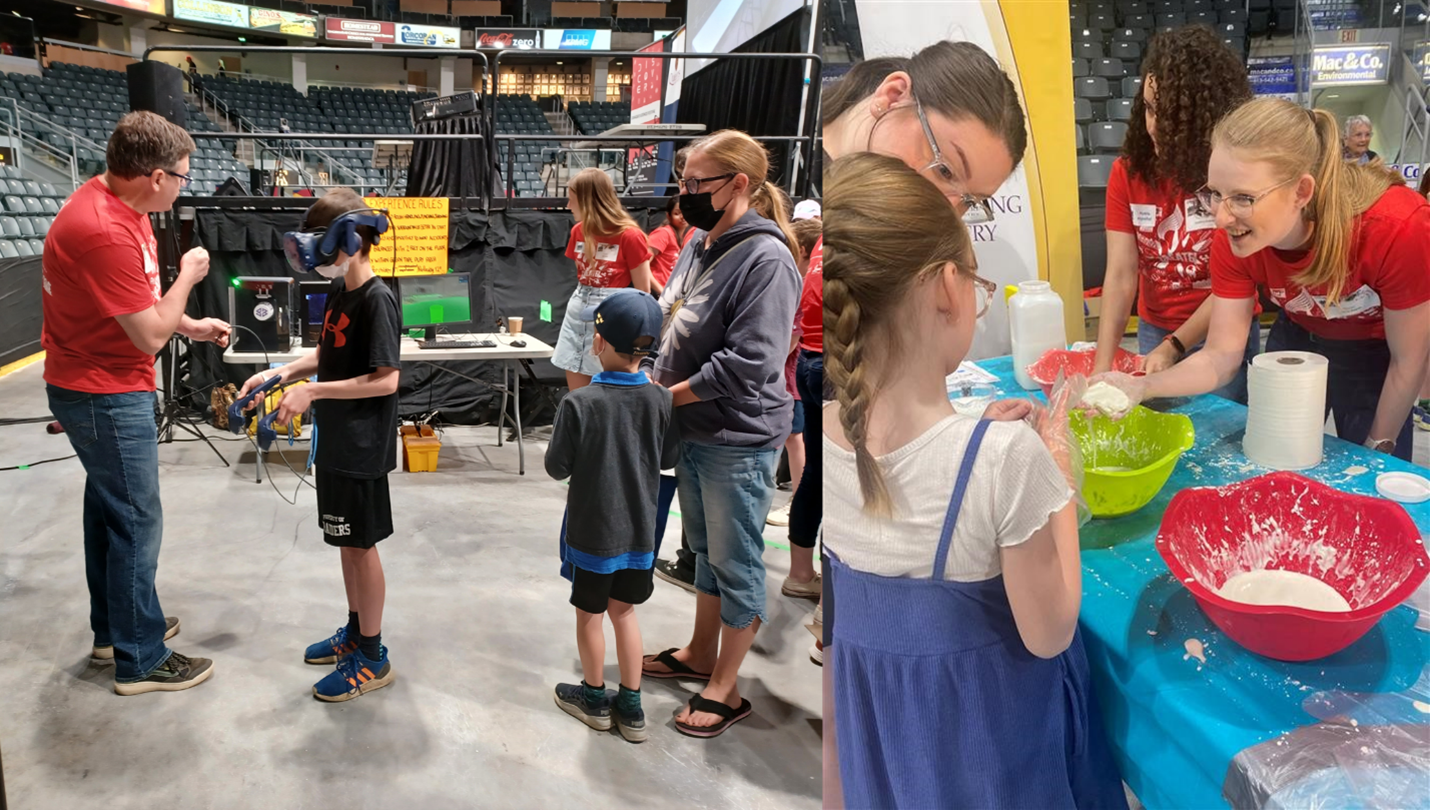On Saturday, May 13th, Science Rendezvous Kingston returned for its 13th edition one day in-person event at the Leon’s Centre, with over 5,300 Kingstonians participating! The Department of Chemical Engineering was represented with interactive booths in Biomedical Engineering from the labs of Laura Wells and Lindsay Fitzpatrick, and by the Chemical Engineering Graduate Student Association (CEGSA).
Science Rendezvous is Canada’s largest one-day pop-up Science Discovery Centre where people and science, technology, engineering, the arts, and mathematics meet to celebrate Canada's research achievements. It aims to inspire and engage young Kingstonians and all citizens to participate in discovery, experimentation, and exploration in all areas of science. This year's theme was CREATE and showcased how discoveries are made and new knowledge is constructed by scientists in labs, forests, space, underground, in hospitals, and remote stations.
The Biomedical Engineering booth introduced how plastics are used in medicine as medical devices that solve problems with a focus on the role of engineering in developing these products. They had demos of biomedical devices for visitors to look at, including vascular grafts (artificial blood vessels), hip implants, and devices for the eye. Also available was a demonstration of how they could be used to solve medical problems with a model heart and eye. Participants took home an activity sheet with instructions on how to make an artificial heart at home.

The CEGSA booth featured a number of activities including: 1) Fuel Cell Car – a remote controlled fuel cell powered car that highlighted the advancements in automotive/combustion technology to reduce pollution and the chemistry required. 2) Virtual Reality Plant Tour – a virtual tour of an industrial facility highlighting how the field is advancing with technology and how we are taking steps to make the workplace safer and more efficient. 3) Newtonian Fluids - this hands-on demonstration focused on the properties of materials, learning about the difference between Newtonian and non-Newtonian fluids that are impacted by shear stress. Participants took home an activity sheet with instructions on how to make ice cream at home.
